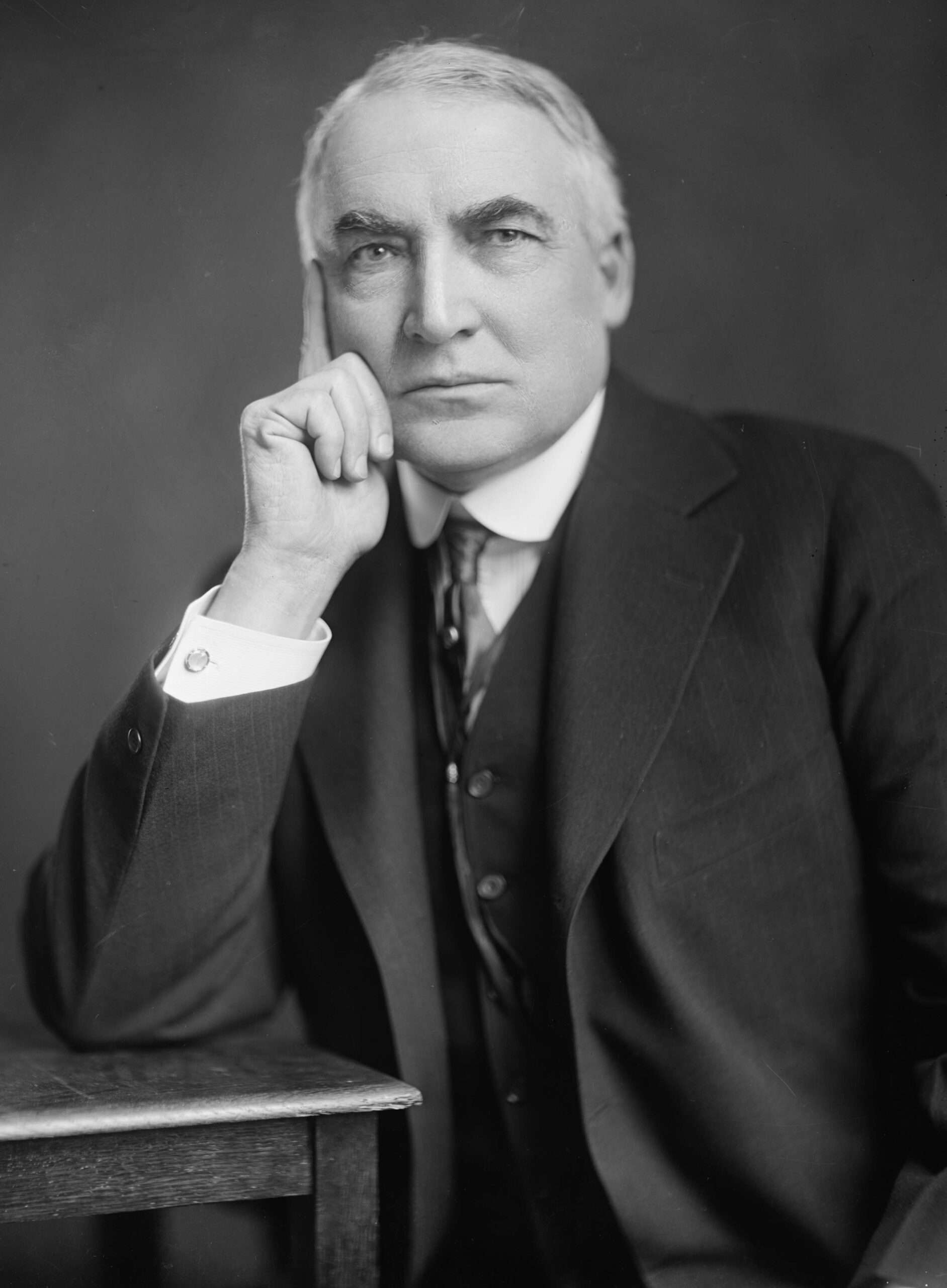The Warren Harding Error – The Unconscious Bias
 Warren Harding was the 29th President of the U.S. He is widely regarded as one of the worst presidents in U.S. history. He wasn’t especially bright, and was at best a rambling speaker. As a senator, he was conspicuously absent for the debates on both women’s suffrage and prohibition, the defining events of his time. He never managed to distinguish himself politically, yet, in spite of this he became the Republican presidential candidate in 1920 and went on to be elected that fall.
Warren Harding was the 29th President of the U.S. He is widely regarded as one of the worst presidents in U.S. history. He wasn’t especially bright, and was at best a rambling speaker. As a senator, he was conspicuously absent for the debates on both women’s suffrage and prohibition, the defining events of his time. He never managed to distinguish himself politically, yet, in spite of this he became the Republican presidential candidate in 1920 and went on to be elected that fall.
An Ohio admirer, Harry Daugherty, began to promote Harding for the 1920 Republican nomination because, he later explained,
“He looked like a President.”
Daugherty was right: Harding had the handsome face, the physique (he was tall and built), his hair was silvering in a distinguished way, he had a rumbling baritone voice. In every way he was the very image of a president, except that it was all window dressing. Behind the trappings was a man whose life revolved around drinking, golf, and illicit affairs with women.
Yet even in the face of his complete lack of suitability, people clung to the idea that he would be a good president.
This is the Warren Harding Error: when we make unconscious assumptions about a person or people and hang on to them even when presented with evidence to the contrary.
The Warren Harding Error is all about how we can get fooled by looks. It’s not about the historical person named Warren Harding, but it’s a psychological thing that makes us judge people by their appearance. Imagine thinking someone is smart or capable just because they look good.
Believing in Appearances
Think about a world where how someone looks matters more than what they can do. The Warren Harding error is about making judgments based on how people look, not their real abilities. It’s like believing someone is smart or good just because they look nice.
Being good-looking has a lot of advantages. Studies show that good-looking people are seen as more capable and trustworthy, even if there’s no proof of that. The Warren Harding Error shows how we sometimes can’t see the truth because we’re too focused on how someone looks.
When We Get Fooled
The Warren Harding Error tricks us in many areas of life. It can affect our choices in politics, job interviews, decisions at the office, and how we see the people around us. It’s most powerful when we don’t know much about someone and have to make judgments based on their appearance.
A better way to judge
We can’t completely get rid of the Warren Harding Error, but we can reduce its effect. The first step is knowing that we can be fooled this way. We should try to look past appearances, find more information, and judge people based on what they can do and their character, not just how they look.
In a world that values fairness and equal chances for everyone, the Warren Harding Error matters a lot. To make the world better, we need to judge people based on their abilities and who they are, not just how they look. By understanding and facing this mistake, we can build a future where people are judged fairly, no matter how they look.
Risks of implicit bias
Implicit biases like this can be dangerous. We can assume things, positive or negative, that simply aren’t true or that are far more nuanced that we allow ourselves to admit, and because they are implicit and unconscious we may not even realize how those assumptions are affecting our behavior. Extensive research has shown that tallness in men translates to substantially higher salaries than their shorter-but-equally-talented counterparts. Other research has demonstrated that white and black children with identical test scores do not have identical rates of referral to gifted programs if both have white teachers. In the one case we give credit where credit may not be due, and in the other we withhold that same credit in the face of evidence that credit is due.
Biases often change with awareness and education, but how do you become aware of something that is unconscious?
The good news is that these attitudes aren’t static. Focusing on positive examples of various ethnic or gender groups helps to shift our mindset, also in ways we can’t consciously perceive, but in ways that improve our implicit associations. Is this enough to solve our implicit bias problem? No, but it does give us hope that if we do the hard work of breaking down those biases, we can achieve some measure of true equality.
The Warren Harding Error is like an optical illusion. It’s time to see through it and understand people for who they really are, not just how they look. In a world where fairness and equality are important, it’s up to you to consciously make unbiased decisions based on skills and character, not just on appearance.

If you struggle with your own unconscious bias, grab 30 minutes on my calendar to have a clarity conversation about them.
sources: https://en.wikipedia.org/wiki/Warren_G._Harding / https://curriculumsolutions.net/blog/2019/05/14/the-warren-harding-error-implicit-bias-part-2/
